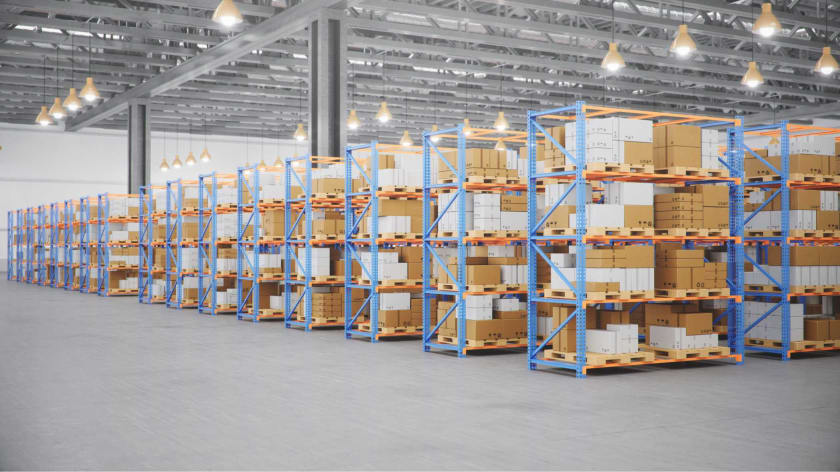How to Improve Retail Distribution of a Fashion Brand



The fashion industry is a booming sector. With the rise in the influence of social media, people want to look trendy at all times, and the easiest way to do this is through clothes.
Nowadays, shopping for clothes is also being linked to a feel-good factor for consumers. This has driven a huge demand for clothing items. Once being a seasonal purchase, with most apparel shopping revolving around festivals and events, people make purchases all year round.
The fashion industry is highly dynamic. With fast charging trends and customer preferences, fashion houses need to keep up with all this to stay in business and remain profitable.
While there are many aspects that a fashion business has to take care of to stay in business, a good distribution channel is the utmost. Fashion houses should have a good distribution network of their apparel to be profitable.
What is Retail Distribution, and Why is it Essential?
Retail distribution means making the products readily available to the consumers by placing them in stores and other places with a vast consumer footfall.
In the apparel business, the right retail distribution will determine the product's sales, hence the company's profitability. It is utmost for a fashion brand to make its products widely accessible to the consumers. This increases the visibility of the brand. Consumers are often fickle-minded, making it more critical to make the products reachable for increased sales.
What is a Retail Distribution Channel and its Types?

A retail distribution channel is the product's path from the manufacturer to the end-user or consumer.
In the fashion business, a good distribution channel has a high impact on the business. The fashion apparel manufactured should reach the retail stores at the right time to influence consumers to buy the brand's products. Any delay in making the clothes available to the consumers can result in huge losses for the fashion brand.
There are three main types of distribution channels that fashion houses can choose from:
1. Direct channel
This is a distribution channel where the retailer sources the clothes directly from the manufacturer. There are no intermediaries like wholesalers or other agents. In this channel, the manufacturer has total control over the distribution of its products, which makes it difficult for the retailer to procure the products in large quantities. However, the products are cheaper since they are directly sourced. This may work as a great advantage to fashion brands.
2. Indirect channel
In this channel, a wholesaler or an agent serves as a middleman between the manufacturer and the retailer. While this may reduce the load of distribution on the manufacturer, the retailer pays a higher price for the goods to include the middlemen's commission. However, fashion brands can order products in higher quantities from these middlemen.
3. Hybrid channels
An alliance of direct and indirect distribution channels, a hybrid channel is the base of most B2B platforms. In a hybrid channel, the manufacturer employs various distributors to advertise its products but still has control over the market. This means that the manufacturer's agents advertise its products on different channels. They then direct any interested parties to the manufacturer, who makes the final call.
Besides retail distribution channels, fashion houses should take care of another fundamental aspect - the retail distribution strategy.
While a retail distribution channel is concerned with how the product reaches the consumers, the retail distribution strategy is more concerned with how the products are marketed to the consumers.
What is a Retail Distribution Strategy and its Different Types

A fashion brand utilizes a retail distribution strategy to market its products efficiently, which increases sales and builds consumer loyalty. A fashion brand should employ a perfect retail distribution strategy to market its apparel to the target consumers and ensure a steady supply chain, proper storage, and effective retail distribution.
There are three retail distribution strategies that fashion houses can employ:
1. Intensive distribution strategy
Under this strategy, fashion houses make their brand apparel available extensively across all places with consumer footfall. These may include multi-brand stores or other retail locations and exhibitions. This helps the fashion brand reach a wider audience, increases brand visibility, and provides opportunities for impulsive purchases, thereby increasing sales.
2. Selective distribution strategy
This strategy is mostly done for niche products for a selective audience. Fashion houses selling niche products have total control over places that sell their apparel. They may choose to sell their apparel in their exclusive stores and a few selective stores with a footfall of their target audience. This helps the fashion houses maintain brand image. As fashion brands choose retailers, they can control various aspects such as product supply and distribution channels.
3. Exclusive distribution
Exclusive retail distribution strategy involves making the products available at limited locations only, thereby keeping the brand's product exclusive. Fashion houses that deal with high-end fashion products often use this distribution strategy to maintain the exclusivity of their products. This works well for high-end consumers as they are attracted to products that are exclusive and not available everywhere.
Fashion brands can choose their retail distribution strategy based on the kind of apparel they deal with, their target consumers, and the brand image they want to maintain.
How to Improve the Retail Distribution of Your Fashion Products
Fashion brands should focus on the different aspects of retail distribution to boost sales. Coordinating between these aspects will help with the smooth flow of their products from the warehouses to retail locations.
Here are a few ways in which fashion houses can improve the retail distribution of their fashion products:
Open communication with the retailers
Fashion houses should work on building a good relationship with the retailers. This open communication channel helps encourage the retailer to focus on the products of the fashion brand, thereby increasing sales. This will particularly be helpful in cases where retailers house multiple brands in their stores.
Focusing on different markets
Fashion brands should be able to identify a market that is not giving sales. Trying to analyze the reason and work towards correcting it will help boost sales. If the new strategies aren't working, they can focus on a different growth area.
Keeping a good relationship with channel partners
A good relationship with channel partners creates a smooth and timely flow of products to the market. Fashion brands should ensure that their products are easily and always available in the market, never missing a customer's buying opportunity.
Identifying new markets for existing products
Fashion brands should always look for new markets to boost their retail sales. This can be done by conducting surveys and hosting promotional events in new markets to identify trends and preferences of the audience there.
Get good quality products for your fashion brand. Fashinza is an online B2B platform for all your manufacturing needs. Just place an order with us, and we will deliver market-ready products to you in no time. Get in touch with us now to launch your collection.



















